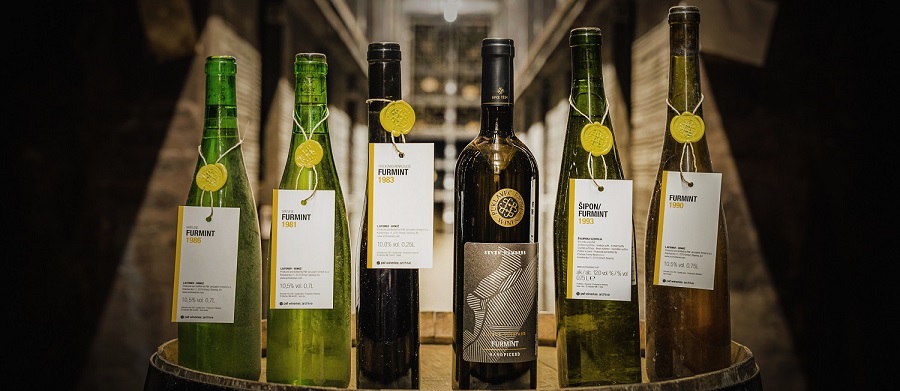
Furmint February with Puklavec Family Wines
It’s Furmint February – which gives us the perfect excuse to sing the praises of this unique and versatile grape. With a biting acidity, Furmint can produce wines with great complexity and longevity, ranging from unctuous sweet wines to crisp dry whites.
Best known for producing sweet (and to a lesser extent, dry) expressions in Hungary’s Tokaj, the grape occupies nearly two thirds of all vineyards in this region. Furmint is highly susceptible to botrytis, and has a naturally high sugar, making it ideal for blending with aromatic varieties to produce world-class sweet wines. Looking outside of Hungary, Furmint is also commonly grown in Austria, Slovakia and Slovenia.
C’est si bon!
“I’d like to tell you a funny story about Furmint!” says Tatjana Puklavec, who owns and runs Puklavec Family Wines.
“In Slovenia, Furmint is actually called Šipon (Shipon). The story goes that when Napoleon and his troops were in our vineyards, they tried the wine and said: C’est si bon… and the Slovenians understood Šipon, and that is why it’s called Šipon now.” If the story is true, Napoleon was absolutely correct – it’s so good!
The Puklavec family’s love for wine started back in 1934, in Slovenia, when Martin Puklavec realised his vision to make the finest wines. Today, Vladimir Puklavec and his daughter, Tatjana, work together, alongside the other winegrowers, to continue this pursuit.
The winery is located in the heart of Ljutomer-Ormož in the Podravje region, in the North-Eastern part of Slovenia, which provides the perfect microclimate for grape growing.
Why Furmint?
Slovenia’s collection of wine grapes are eclectic – with an Italian influence in the west, a Germanic influence in the east, and an increasing French ‘international’ influence in general. This mix of influences means you can find anything from Riesling and Traminer, through Refosco and Rebula, to Sauvignon Blanc and Pinot Noir.
So, what is it about the Furmint grape that inspired Puklavec to plant it? “I wish I could answer that, because Slovenians have been growing it for over 1,000 years,” Tatjana explains. “I can only guess it was influenced by the Hungarians, that they thought that this grape could also do well in our vineyards.”
“The conditions are perfect for Furmint. It is a cool climate area, with warm days until late September. Since Furmint is a late ripening varietal, the grapes benefit from the longer ripening period,” she says.
“We have always produced dry and sweet Furmints, depending on the harvest conditions. Our oldest dry Furmint that we still have in the cellar is from 1968, and it is still perfectly drinkable and alive. Our 1971 Furmint even won gold at Decanter in 2021!”
What is so unique about Furmint?
“I believe that the grape produces excellent wines on every quality level,” Tatjana says. “Furthermore, it is really diverse; we are producing fresh and zingy wines out of Furmint, rich and complex ones, and even sweet wines.”
“In recent years we have also been using Furmint as part of our sparkling wine base, and we are producing dry Furmint within different brands. We make a fresh minerally version, as well as a more structured and complex wine, which ages for 10 to 12 months in our 1,000 litre wooden barrels.”
How do you spot Furmint?
“Furmint has a high acidity and it takes some time for this acidity to settle. When the wines are bottled young, they are very zingy and fresh, but after a couple of months the wines develop certain herbal notes, the acidity lowers, and the wines become more complex with a medium body,” Tatjana explains.
“It is also really interesting how Furmint develops in a blend. We have a blend of Sauvignon Blanc and Furmint, and the Furmint really gives the wine a good structure, and some minerality and acidity that makes the wine super vibrant.”



